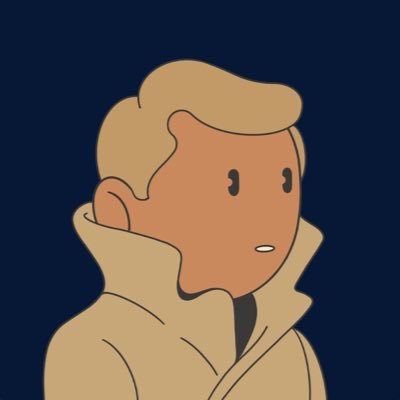About chrisgranneberg

Chris studied Industrial Design at Pratt Institute in Brooklyn, NYC where he graduated in 2004.
Soon after graduating Chris joined Karim Rashid's studio in NYC where he was promoted to Product Director in 2009 managing the global Industrial Design projects and team. At Karim's, Chris collaborated and led hundreds of projects with brands including Samsung, LG, Asus, 3M, Unilever, Coca-Cola, Alessi, Orrefors and BoConcept.
Leaving Karim's studio in 2013 Chris was recruited at the PepsiCo Design Center as one of the CDO's initial hires. At PepsiCo, Chris managed the Industrial Design component of global structural design projects for both foods and beverages for 3 years.
In 2016 Chris relocated from Brooklyn to Los Angeles to launch his design studio.
An interview with chrisgranneberg led by Carlo Borloni


Let’s start with a childhood image: a kid, an ice cream, and an SUV. How formative was that moment for your creative imagination? What did it teach you about the relationship between design and wonder?
As a little kid, I didn’t understand the world, the idea of people, like me, working together and deciding how they would shape the world around them was a realization. When I was 5 or 6 admiring a Jeep Grand Cherokee eating ice cream in a car lot, I understood. Humans shaped everything around me. I never really thought about it again as a career until years later with another realization switching my major from graphic design to industrial design after seeing my roommate making a stereo for school, I thought “I’d like to do that too”.


You studied Transportation Design in a context that wasn’t specifically geared toward it. How did that shape your trajectory and eventually lead you to Industrial Design? And what did you carry with you from that early fascination with cars?
I switched majors to Industrial Design and had more interest and skill designing physical objects. There were Transportation Design classes at Pratt, and they looked like the most fun, my last couple of studio classes were spent making a clay model of a car, marker renderings which I sucked at, and designing a scooter. I did think I was pretty good and applied to the Royal College of Art but didn’t get in. I did an internship at a Design studio in NYC eventually becoming Design Director and realized I was good at designing every type of product and found the diversity of work and problem solving is what I love most about my day to day…a bottle for billions a bong for thousands, or a chair for hundreds, it’s interesting.
As I’ve gotten older and more stuff has been produced, and my space is being filled with samples, I have less joy in “too much” physical design, pieces or tools with meaning and function matter, but the world has too many disposable products. My outlet for creativity is no longer physical but digital.


With “MECHANICAL_MEMORIES,” you symbolically return to that world of vehicles and motorized dreams. What kinds of cars or visual references inspired this collection? Were there specific cartoons, films, or designers that had a strong impact on you?
What inspired the vehicles in the collection are memories of vehicles that stuck with me, that continue to interest me still. Many vehicles are from my favorite movies and TV shows, some are just cars that I’m keeping an eye out to see if I can grab one some day, others are suggestions from friends that I admire and forgot about.


You’ve said that in 2024 you discovered a new creative process, quick but surprisingly rich, that opened the door to this body of work. Can you tell us more about how it works and how you found the right balance between control and serendipity?
This collection is very process based. I chose a vehicle. I chose a side view facing left as car photography is generally facing right to show movement, most of my renders in design face left to engage instead. I created the side views either from ChatGPT or edited photos I found. I brought each vehicle into my rendering program KeyShot where I set a plane in front with a bump map to become a distorted lens. I moved the bump map to find the wackiest distortions and rendered each frame. I then dithered each frame in about 10 colors. For the backgrounds I scanned glitter card stock and dithered in about 6 colors. Combined and matched the foregrounds to the backgrounds and selected colors I thought created a matching mood.


You chose a 16:9 format, 128x72 pixels, not just a technical decision, but a conceptual one. What does working within these small but highly accessible dimensions mean to you? Is it a way of “democratizing” design?
I became interested in fully on-chain art a couple years ago, having a file size constraint is a fun problem for me as with design the more technical constraints in the brief (most briefs) the better my design will be. I needed to use about 16 colors, while having as many frames as possible, at the smallest aspect ratio possible to mint them fully on chain SVGs. The aspect ratio of 128x72 is perfect for displays imo as the chunkier pixels looked better and more dreamlike than smaller pixels…while being cheaper too. I’ve been going to many irl events over the last couple of years and most use 16x9 aspect ratio, I have art on my TV rn, it’s important to have some work that displays correctly for me.


You decided to mint the entire collection fully on-chain, making it eternal and independent from the physical world. What does it mean to you to create something that might outlive your own life?
I design a lot of stuff, way more than I share. Some is to pay the bills, I do my best to make every product special and work with good clients…but some will eventually be garbage because of its material or obsolescence. My favorite work is designing heirloom quality durable products that might last hundreds of years and bring some joy. Minting fully on-chain is like that, it. will outlive me and will likely not become obsolete, it’s a cool legacy too.


You’ve mentioned living with HPPD and how it affects your perception of the world. How does this perceptual filter manifest in the works of “MECHANICAL_MEMORIES”? Is it a form of visual self-narration?
Going back to the process, I was focused on the frames in each vehicle. I wanted them to not look like the vehicle depicted, I wanted each frame to be almost unrecognizable but with some lines or colors of the original. I wanted them to reflect the way I view the world in an exaggerated way. My perception is fucked LOL. In 1994 I ate acid for like the hundredth time while I had pneumonia and was by myself and it was really bad. It was so bad I waited for it to wear off with no sleep for days, I was 15. It didn’t wear off and left me seeing the world like 4 hours after you eat acid, but forever. I discovered like 10 years ago the condition is common and called HPPD or hallucinogen persistent perception disorder, this obviously sucks but besides the panic attacks and some trouble years ago I like waking up and seeing the static when I open my eyes and the way everything has trails and is shifty and sparkles and moves around. This collection is a pixelated exaggeration of my perception of the world.


The working title of the collection, “MECHANICAL_MEMORIES”, is already very evocative. Other options like “Wonky Racers” or “Driveway Daydreams” suggest different tones. What kind of mood do you feel best tells the story of these works, nostalgic, playful, distorted, or something else entirely?
Mood of the collection is trippy nostalgic digital memories that people relate to. It has a vibe that would look good on a wall but much different in process to my previous work. The collection is only about showing vehicles that I like through my lens and constraints and hoping others connect with them too.


In your practice, art and design seem to meet in a very fluid way. When creating these works, do you feel more like an artist or a designer, or are those just two sides of the same coin in your journey?
Creating this collection I definitely leaned more designer than artist in my process. I didn’t draw them all willy nilly but made calculated decisions with constraints in mind. I thought about my audience and how people might see me. Over the last year I’ve been busier than the years before and have honestly had less time to create art. Having an assembly line like process making art that I enjoyed making was more time efficient and doable than a hand drawn collection. Distorting each frame and deciding the colors and values was a lot like product rendering.


What do you hope people feel when they look at these works? More than recognizing a car or an aesthetic, is it an invitation to reconnect with their own imagination? To see the world, even for a moment, through your eyes?
I hope people connect with the collection, loving the vehicle, the memory of it, or just the aesthetics. Someone already likes each vehicle in the collection, I hope they see it and it brings back a good memory.

Sign up for our newsletter to keep up with the latest news from NINFA
Sign up for our newsletter to keep up with the latest news from NINFA
Write us at: info@ninfa.io, or click here if you need support
Copyright © 2026 Ninfa Labs - 12094240962 - All rights reserved

